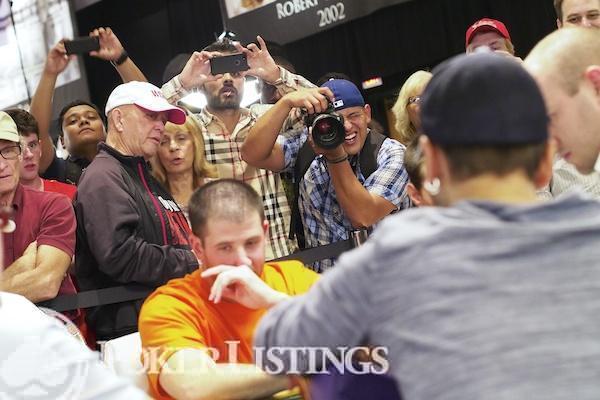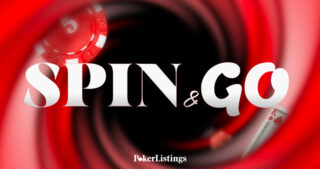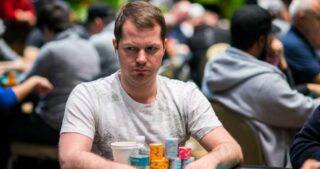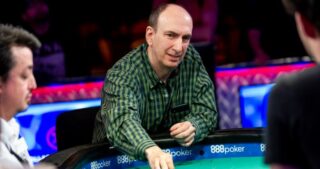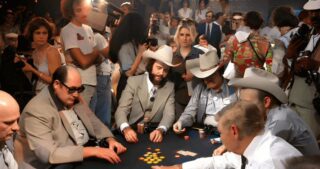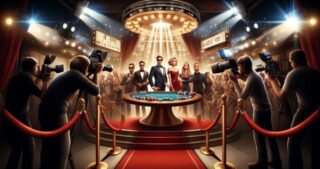Taking photos of people playing a card game while trying to remain absolutely still in a controlled environment sounds like one heck of an easy photography gig. And yet there are thousands of bad poker photos circulating the Internet. At PokerListings we’ve been photographing poker tournaments around the world for nearly 10 years now and we’ve taken hundreds of thousands of photos. Some of our photos are good, some are bad, but we like to think we’ve picked up a few tricks along the way. We thought it would be a good time to share some tips for anyone just getting into poker photography. This article assumes you already have a camera to work with but stay tuned for our next article about poker photography where we’ll get into the best starting equipment. An intro to poker photography awaits after the break.
5 Tips for Taking Great Poker Photos
1. Lighting is Everything
So here’s the thing: low light performance is probably the single most important factor for poker photographers.
Why? There are a host of reasons. For one, there are numerous poker rooms that simply aren’t very well lit. Two, you’re never allowed to use flash during a poker tournament so you can’t rely on fill-flash or strobes or anything (although you can use them for winner shots after the tournament is finished).
That means you’re going to have to crank the ISO up on your camera and hopefully get lenses that have an aperture of 2.8 or less (more on that later).
2. How to Set Your Camera for Taking Poker Photos
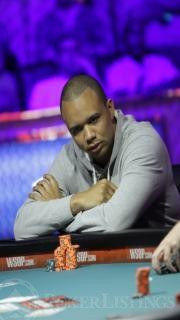
There are countless settings for various cameras so we’re just going to touch the basics.
ISO: This is light sensitivity and there’s a good chance you’re going to have to crank this for good shots in most poker rooms. Most modern SLR’s can do over 1,000 ISO with no problems.
Aperture: You’re going to want this as wide open as possible for two reasons. One, you want to let the most light in. Two, you want to get a nice background blur going to help make the background more dynamic. We’re talking f/2.8 or lower. Aperture is horribly confusing, by the way. Lower numbers essentially mean more light. F/1.8-F/2.8 is good for poker. Beyond F/4.5 is rough. The exception to this rule is group shots or pictures of the entire room.
Shutter speed: Unless you’re trying to capture cards in the air, you don’t have to worry about this one too much. Most players are quite still and you’ll be more concerned about getting maximum light.
White Balance: You can go with auto and hopefully do alright but in our experience most poker rooms are way too warm because of tungsten lighting. Your camera should have a setting for tungsten bulbs. Of course if you really want to be a pro you can grab a white piece of paper and get some custom white balance going on.
3. How to Take Photos in a Poker Room
First of all, let’s just assume you have media credentials because if you don’t you’re not getting past the rail and you will be hard-pressed to get close enough to the action to document it.
Poker rooms are vastly different around the world. Some are well lit and offer interesting backgrounds while others have horrible lighting and look like basements. You have to make do with what you have at your disposal.
If the tournament has a TV table that’s being utilized, by all means use it to get photos. You’re all but guaranteed to get some good shots thanks to professional-grade lighting and dramatic backgrounds.
How to approach a table:
- Decide which seat you want to shoot and set up in a corresponding position (remember to stay out of the way of the tournament staff).
- Ideally you're going to want to be a bit lower so you get some distance between your subject and the background. Depending on your height you can either take one knee, both knees or use a monopod (tripods are a bit bulky).
- Take a few throwaway shots of your subject just to make sure your settings are correct.
- Wait until the player has cards (this makes players in late position easier to shoot).
- Try to catch them looking up, instead of down.
- It's going to be even easier if your subject is involved in a hand that goes on for awhile.
- Rinse/Repeat
4. Examples of Poker Photography
Here are some examples of poker photography, both good and bad, with a little bit of commentary on each one.
1. Overexposed Phil Hellmuth
You should never use a flash while poker is being played. Not just because it distracts the players but also because it generally makes for a pretty bad photo. In this one Phil Hellmuth is overexposed, you can’t see what’s going on table and the background looks bad as well. Don’t do this.
2. Chip Jett Feeling Red
On the other hand this is an example of too little light. Chip Jett is very red and there’s very little detail in the image. A big part of the reason is that the camera’s aperture is set to F/5.6, which is simply too slow in this situation.
3. Annie Duke is a Mess
This is no good. The image isn’t sharp. Annie Duke is making an awkward pose. She’s not even looking up. This is just all around bad.
4. Phil Ivey Smiles
Ah, that's better. First of all it helps that Phil Ivey is smiling. The camera is set to f/2.8, which improves lighting and also blurs the background a bit. It’s too bad the dealer is so close to Ivey but that’s a common problem with tight-packed poker tables.
5. Jason Mercier Throws
Considering poker is all about stone cold stares and remaining motionless, it’s nice when you can actually get a bit of action, whether it’s a player tossing his chips or cards in the air. The key is to be prepared. If you’re looking to catch a player mucking just focus on them well in advance, increase your shutter speed a bit and rapid-fire shoot when it’s their turn to act. It’s all about anticipating the action.
6. Sad Devilfish is Sad
You’ll find that poker players are much more expressive after they win or lose a hand. It’s worth waiting around an extra minute or two to capture a smug grin as a player drags in the pot or shaking their head and looking skyward after seeing the pot go the other way.
7. The Room Shot
This is a standard shot of the Amazon Poker Room in Las Vegas. You’ve seen it many times before and you’re going to see it again. It’s a relatively easy shot. One of the best ways to frame it is going to one of the corners and shooting out at a good height to capture as many tables as you can. Try to avoid lots of blank space.
8. The Sick Shot
This one is rare. Every now and then a sick beat will occur in poker and the expressions on player’s faces will be priceless. Unfortunately this is one of the most time-consuming shots you can possibly imagine as it means picking up your camera and pointing it at a player every time they’re all-in. You could get this shot maybe once in 50 tries. It’s amazing when it works out, however. This particular shot was captured by the imitable BJ Nemeth.
9. Back Corners are Bad, TV Tables Are Good
It’s amazing what some TV-quality lighting can do for your shots. Taking photos at TV feature tables is like shooting fish in a barrel. The backgrounds tend to be dramatic and the lighting should be spot on. Great for getting high-quality profile shots of big-name poker pros. This shot of Gus Hansen took all of two seconds with a decent zoom lens.
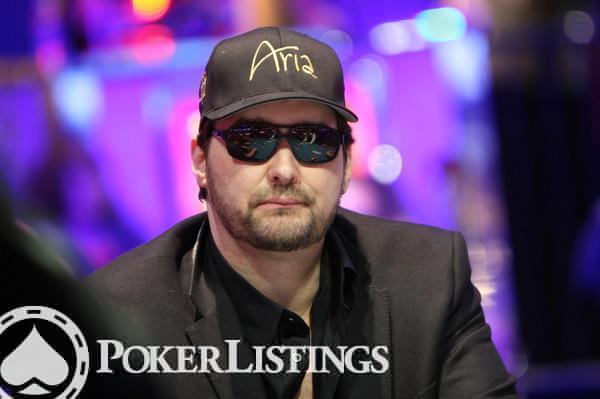
10. Up Close and Personal with the Poker Brat
Don’t underestimate the power of a good zoom in poker. If you want to get a nice close-up of a poker pro, it’s really the only way to go. It’s can be especially helpful if the background is particularly boring or the table is filled with coffees or other debris.
What Camera to Buy to Shoot Poker
There are actually a number of directions you can take for buying poker photography equipment.
Although it’s possible to take a decent poker photo using a cell phone camera or a point-and-shoot (particularly if you can close to the table), we wouldn’t recommend it.
Instead you’re probably going to want a DLSR, so you can swap out that kit lens. Right now there are two major options: Standard DSLR or mirrorless. We’ll start with the standard DSLR.
Standard DSLR
This includes heavy hitters Canon and Nikon, which offer entry-level models that cost around $400-$600 but have professional grade cameras that cost thousands. These are what most professional photographers use and the lens selection is pretty much unparalleled. You can’t really go wrong with Canon or Nikon
Mirrorless DSLR
Lately mirrorless cameras have been getting more and more publicity thanks to a few killer features. There are some camera enthusiasts who think this style of camera is the future of photography.
Perhaps the two most highly-touted advantages are smaller size and less moving parts on the inside.
Some of the biggest players in this market are Panasonic and Olympus, which use the micro four-thirds bracket system and Sony’s NEX line which uses E-Mount, Fujifilm’s X-Mount and Leica’s M-Mount. Canon and Nikon also offer mirrorless cameras but they were rather late to the party.
Lenses
Lenses are very, very important for poker photography.
Regardless of the camera system you choose, you’re going to need some fast glass for low-light performance. You’re specifically going to be looking at lenses that have a high maximum aperture, which is represented by smaller f-stop numbers. Anything below f/2.8 is good in our experience. Don’t bother with anything less than f/4.0.
Unfortunately fast glass is very expensive. On the bright side almost every camera system has one lens that is a steal.
Nikon and Canon both have fast 50mm f/1.8 lenses that cost around $100. These are great starter lenses for poker.
When it comes to focal length it’s really subjective. Shorter focal lengths like 24mm and 50mm have the added bonus of being able to shoot the entire room at once while big zooms like 70-200mm give you the option of doing close-ups.
Sample Budget DSLR Set-Up
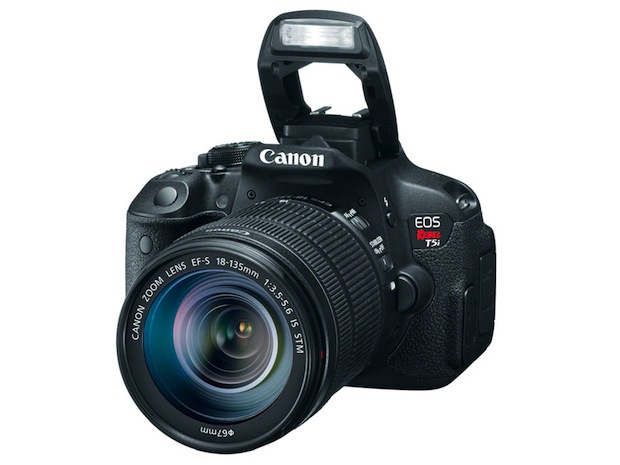
Here’s an example of a cheap DSLR set-up that should at least get you started in poker photography.
Camera: Canon T5i (body only) Also known as EOS 700D in Europe
Price: $749
Lens: Canon EF 50mm f/1.8 II
Price: $121
Total Cost: $870
Summary: This is a good, fast, set-up that will get you going. It eschews the kit lens for a low-light 50mm. The only reason you might want to get one with a kit lens is that will be easier to take pictures of the entire poker room. It’s only $50 more. In the future you could seriously upgrade your zoom capabilities by adding a 70-200mm f/4 for around $1,000. There are quite a few upgrade options as Canon and Nikon DSLRs have widest lens selections.
Note: You’ll need an SD memory card but those cost $10-$30.
Alternatives: Nikon D3100 $449 + Nikon 35mm f/1.8 AF-S DX $219
Sample Budget Mirrorless DSLR Set-Up
Camera (includes lens): Sony NEX-6L/B 16.1 MP with 16-50mm Power Zoom Lens
Price: $648
Total cost: $648
Summary: As you can see the mirrorless cameras tend to be a bit cheaper. The NEX-6 actually comes with a decent kit lens that has a nice focal length for poker. You’ll be in great shape for wide shots (where it can shoot at f/3.5) but you’ll be harder pressed for zoom shots across the table. The upgrade options are more limited with mirrorless cameras but Sony does make a 50mm f/1.8 for $298. There’s also a rumor that Sony will be releasing a Sony 55-150mm f/2.8 in the fall. That lens would potentially be fantastic for poker.
Alternatives: Panasonic DMC-GF6 $599, Olympus E-P3 $899, Fujifilm X-M1 $799
